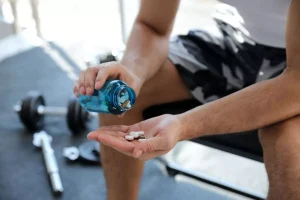Alcohol Withdrawal: Symptoms, Treatment & Timeline

Alcohol withdrawal syndrome (AWS can cause a range of symptoms, from mild anxiety and fatigue to severe hallucinations and seizures. In extreme cases, it can be life threatening. Alcohol withdrawal is a potentially alcohol detox side effects serious complication of alcohol use disorder. It’s important to get medical help even if you have mild symptoms of withdrawal, as it’s difficult to predict in the beginning how much worse the symptoms could get.
- Individuals experiencing mild symptoms could receive home treatment with the help of close friends and family members.
- This condition is serious and may lead to symptoms such as high blood pressure, tremors, and seizures.
- If you feel that you sometimes drink too much alcohol, or your drinking is causing problems, or if your family is concerned about your drinking, talk with your health care provider.
- As the stimulating chemicals in the brain overpower the diminishing depressive effects of alcohol, symptoms begin to surface.
- Symptoms of alcohol withdrawal can occur as early as a few hours after a person’s last drink.
Articles Related to Alcoholism
While some of these changes can be uncomfortable for some time, they will eventually begin to improve the longer you abstain from alcohol use. If you begin experiencing severe symptoms of AWS, it’s important to seek immediate medical attention. The sooner you begin treatment, the better your chances are of preventing life threatening complications.

Outlook for alcohol withdrawal syndrome
It’s based on several factors, including how long, how much, and how regularly you have been drinking alcohol. The severity of alcohol withdrawal is categorized into three stages. Not all people progress through all of the stages of alcohol withdrawal. The symptoms of alcohol withdrawal relate proportionately to the level of alcohol intake and the duration of the person’s recent drinking habit. Alcohol withdrawal causes a range of symptoms when a person with alcohol use disorder stops or significantly decreases their alcohol intake.
❓ What Does Alcohol Withdrawal Feel Like?
✔️ Alcohol withdrawal can cause physical sickness, which may result in loss of appetite or make it difficult to take in food. Taking in enough nutrients and keeping yourself properly hydrated during and after detox can help improve both the look and feel of your skin. A glass of regular beer has about 150 calories, and a serving of wine has about 120. On top of those mostly empty calories, alcohol ramps up your appetite. It also makes you more impulsive, and less able to resist the fries and other temptations on the menu.
Over time, heavy drinking can cloud your perception of distances and volumes, or slow and impair your motor skills. But if you quit, your brain seems to be able to regain some of these abilities. Like other symptoms, the impact on mood depends on the amount and duration of your alcohol use. For light or moderate drinking, you might experience a more temporary, mild effect on mood.

Tremors often affect the hands but can occur elsewhere in the body as well, according to the U.S. Professional alcohol detox can create a safe and supportive environment for detox to occur. Alcohol withdrawal creates a range of undesirable mental and medical symptoms.
If you have any of these risk factors, it’s important that you withdraw from alcohol at a medical facility that’s equipped to prevent and treat alcohol-related complications. Doctors may prescribe other medications to treat withdrawal-related symptoms. One example is a beta-blocker (such as propranolol) to reduce high blood pressure. Most people stop having withdrawal symptoms four to five days after their last drink. You may be prescribed a benzodiazepine to help manage withdrawal symptoms.
Risks and Complications
Post-Acute Withdrawal Syndrome, or PAWS, refers to a number of withdrawal symptoms experienced following the acute withdrawal phase of recovery. While the acute stage of recovery involves intense physical symptoms over a period of one to two weeks, PAWS symptoms can persist, disappear and reappear for months. The primary neurotransmitter tied to relaxation is gamma-aminobutyric acid (GABA). GABA also helps produce endorphins in the brain, which produce a sense of well-being. Excessive alcohol use causes a GABA imbalance that the brain becomes accustomed to, so it regulates its neurotransmitter production to account for the influence of alcohol.
- Alcohol detox can offer treatment for alcohol withdrawal, as well as medical supervision and monitoring for medical complications that can arise during acute alcohol withdrawal.
- You can even ask your clinical team to help you come up with a plan ahead of time, so if you do begin to experience PAWS, you know what to do.
- Unstable vital signs increase the risk of complications and can be managed with medications.
- If your symptoms are more severe, you may need to stay in the hospital.
- A person with this condition can have a very high heart rate, seizures, or a high body temperature.
- Quitting alcohol and abstaining for several months to a year gives your brain a chance to try to recover.

